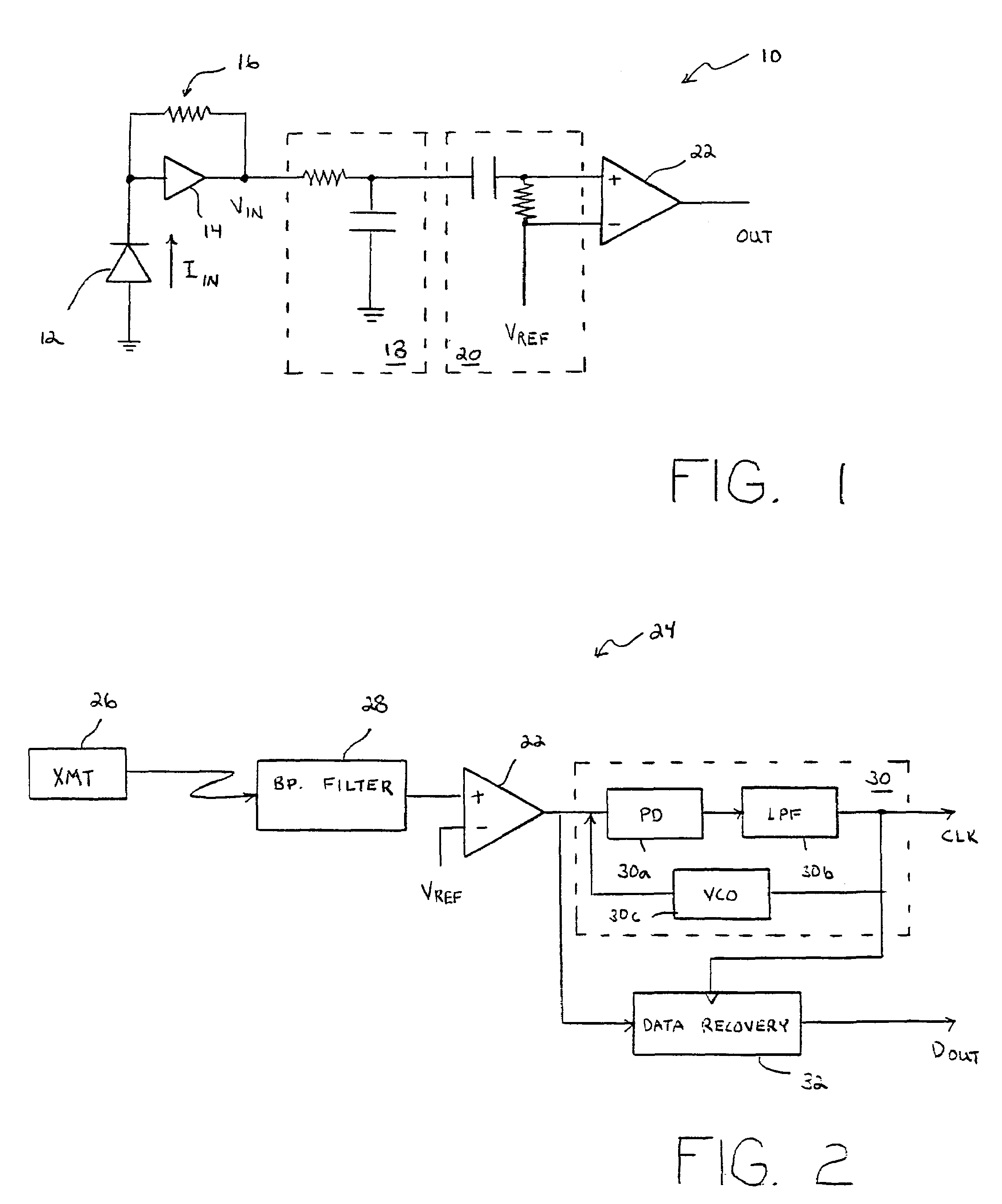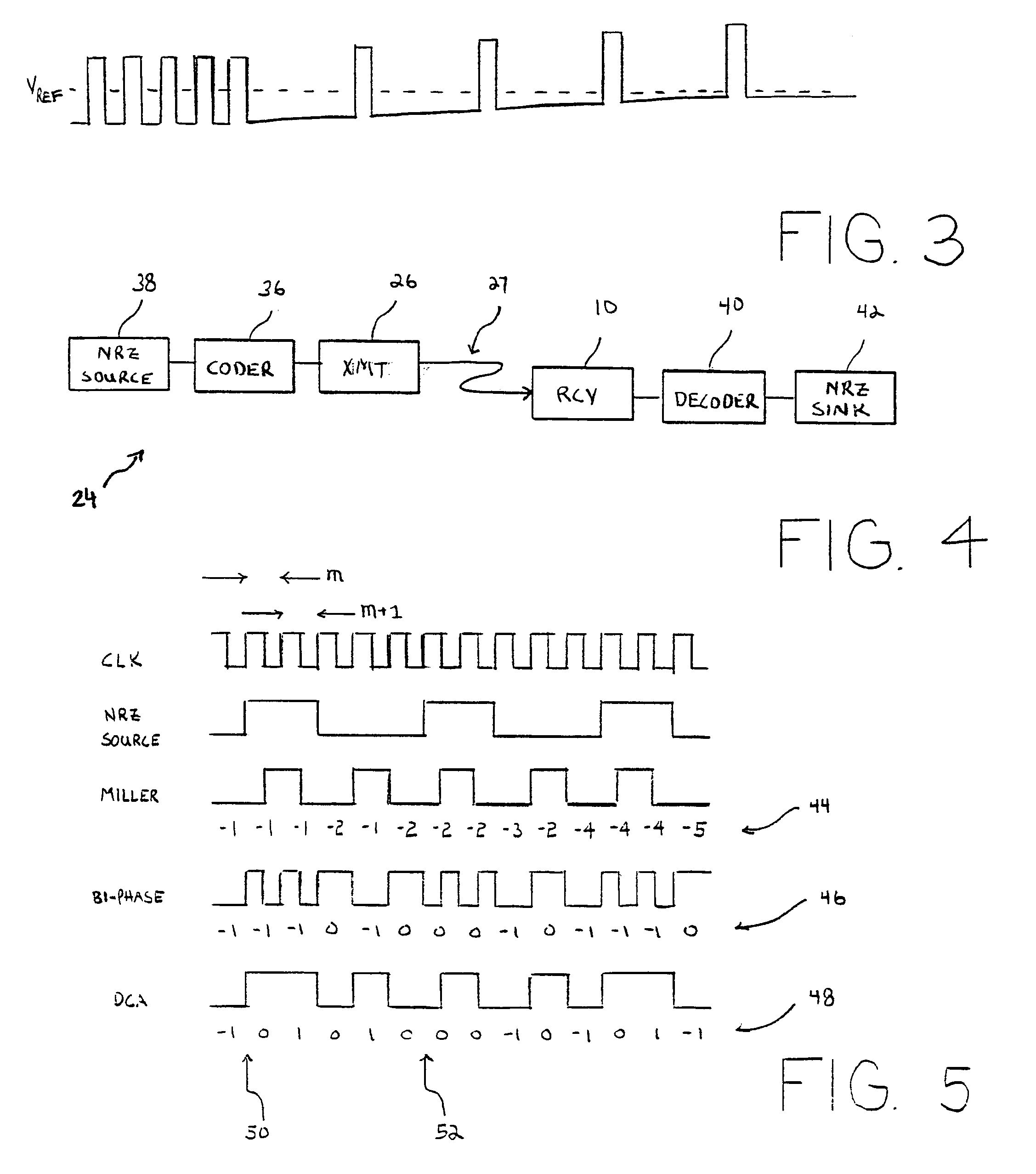Selective scrambler for use in a communication system and method to minimize bit error at the receiver
a communication system and selective scrambler technology, applied in the field of selective scramblers in the communication system, can solve problems such as inter-symbol interference, or isi, loss or incorrect communication of certain bits within the data stream, and skewing in the direct current baselin
- Summary
- Abstract
- Description
- Claims
- Application Information
AI Technical Summary
Benefits of technology
Problems solved by technology
Method used
Image
Examples
Embodiment Construction
[0042]Turning now to the drawings, FIG. 1 illustrates a receiver 10 that is coupled to receive a data stream sent across a transmission path, such as a wired or wireless transmission path. Receiver 10 can be placed into a node that also contains a transmitter. Each node of the communication system can therefore include a transceiver. If an optical fiber is used, then receiver 10 can convert light energy to an electrical signal upon photosensor 12. Photosensor 12 converts optical energy into electrical energy, such as current IIN. An amplifier or buffer 14 and load resistor 16 convert IIN to an input voltage VIN.
[0043]Associated with the transmission path and / or receiver 10 is a low-pass filter 18. The frequency response of the low-pass filter depends on the resistor and capacitor values within filter 18. Also associated with receiver 10 is a high-pass filter 20. Filter 20 includes a blocking capacitor and a resistor. The resistor produces the voltage across the positive and negative...
PUM
 Login to View More
Login to View More Abstract
Description
Claims
Application Information
 Login to View More
Login to View More - R&D
- Intellectual Property
- Life Sciences
- Materials
- Tech Scout
- Unparalleled Data Quality
- Higher Quality Content
- 60% Fewer Hallucinations
Browse by: Latest US Patents, China's latest patents, Technical Efficacy Thesaurus, Application Domain, Technology Topic, Popular Technical Reports.
© 2025 PatSnap. All rights reserved.Legal|Privacy policy|Modern Slavery Act Transparency Statement|Sitemap|About US| Contact US: help@patsnap.com



